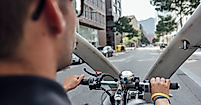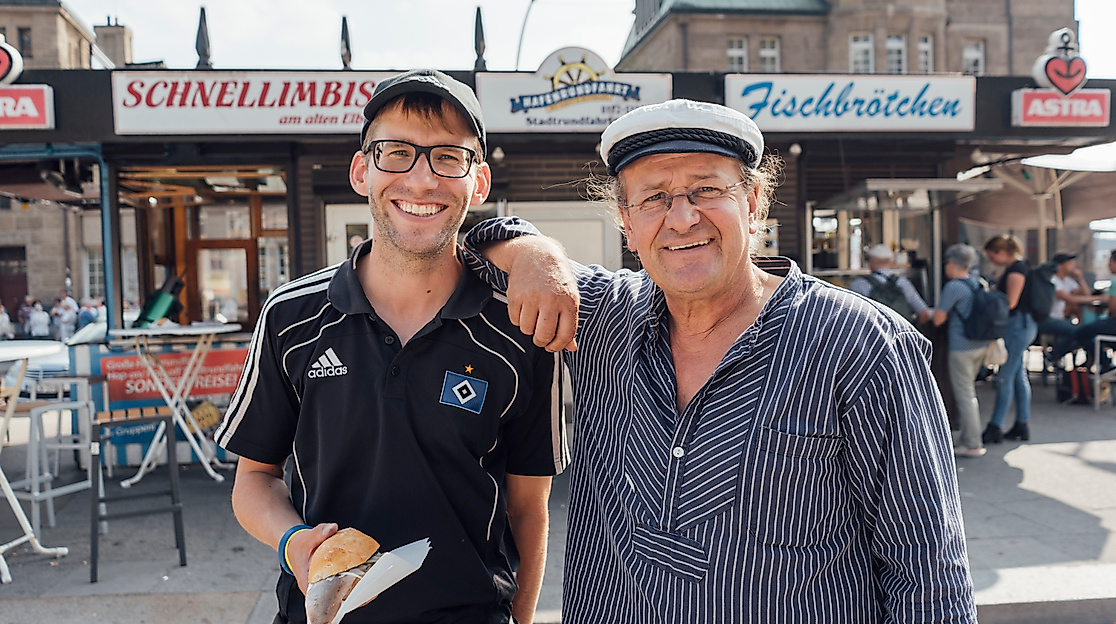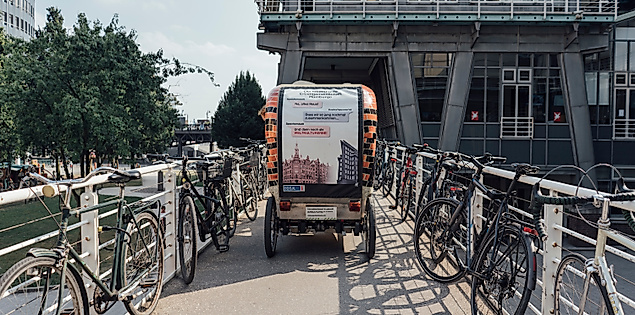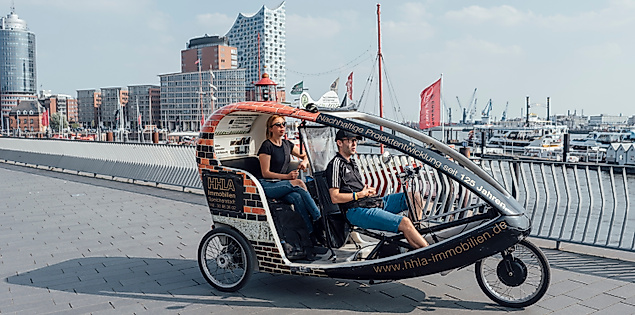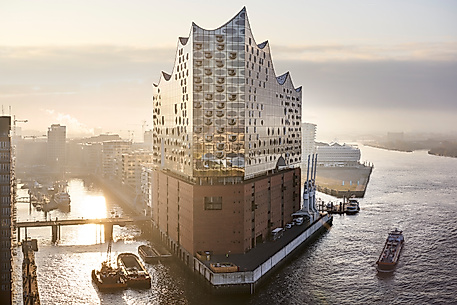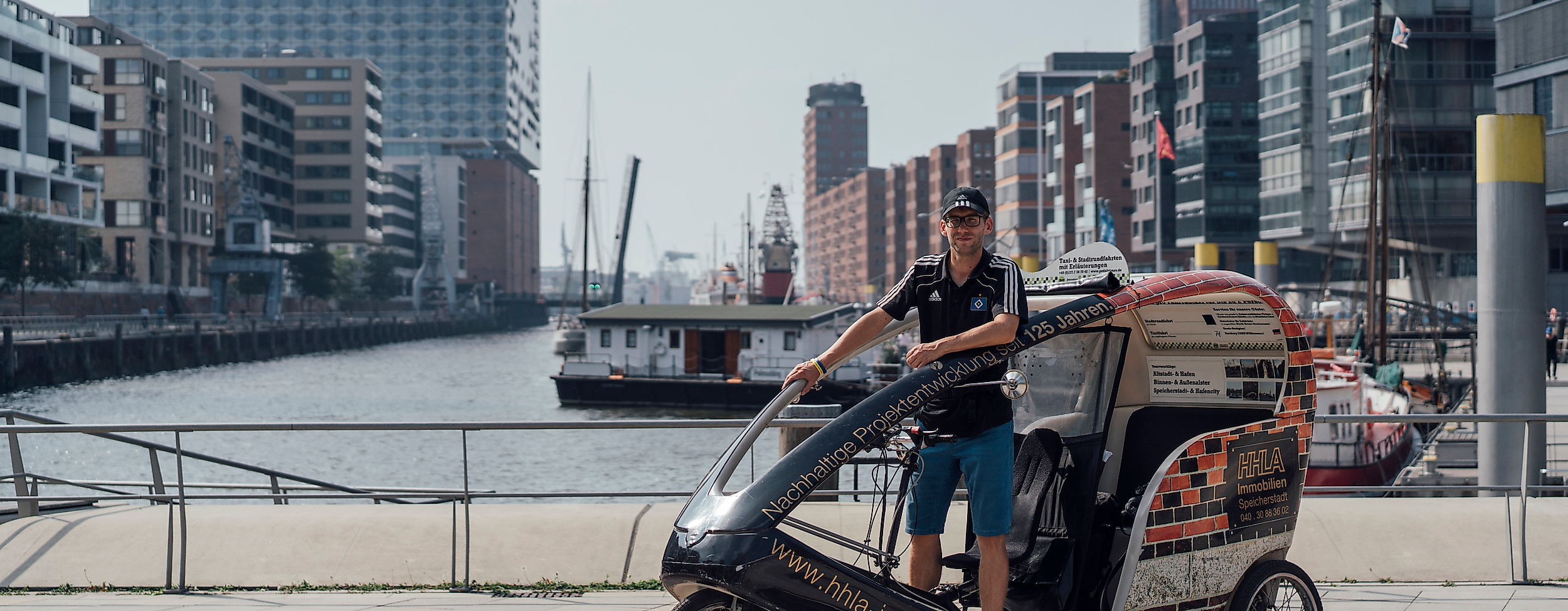
With the rickshaw through Hamburg
On the back seat of a rickshaw, Hamburg's old town becomes a flowing panorama. Author Lena Frommeyer accompanied city guide Stephan Oelke on a round trip - and found out that you can often get very close by bike.
It rattles and jolts as Stephan Oelke takes the small step in front of the old Kontorhaus on Nikolaifleet. He wants to get a little closer to the Laeiszhof. The electric motor on the back of hums reassuringly as it manoeuvres the bike past pedestrian benches. This is the great advantage of a ride through Hamburg with the rickshaw: "The hidden paths in the old town are much too narrow for city tour buses and taxis," says the 35-year-old.
From a temporary job to profession – How did Stephan become a rickshaw driver?
As in Asia, Hamburg drivers earn their money on an independent basis. The rickshaws are rented. Stephan Oelke got behind the wheel for the first time as a student, seven and a half years ago. He was looking for a flexible part-time job where he could be close to the fresh air and his hometown. Now, however, he's known in the streets: He greets shopkeepers, gives pub owners a hand and chats with colleagues. Many drivers actually come from other industries and are photographers, engineers or artists. Stephan Oelke studied social economics.
You rarely get this close to Hamburg: Travel by rickshaw
Stephan Oelke's tool is three metres long, a good one metre wide and weighs 130 to 150 kilos. With his bicycle taxi he shows Hamburg visitors the most beautiful places in the old town, spectacular HafenCity buildings and the St. Pauli behind the Reeperbahn. His rickshaw doesn't have much to do with the rusty companions that some long-distance travellers may know from the dusty streets of India. A large plastic cabin, a powerful electric motor and manoeuvrable wheels are standard features of modern carriages. The company that makes them comes from Berlin. The first bicycles rolled through Germany's capital at the end of the 1990s. Two architects later brought the trend to the Elbe.
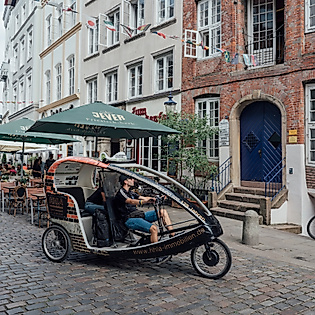
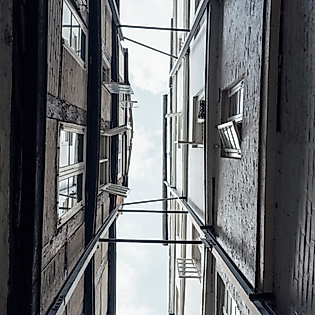
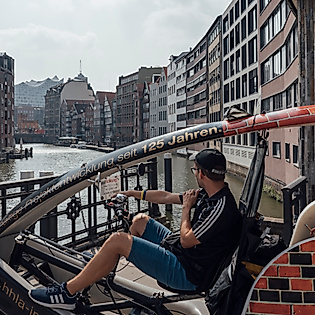
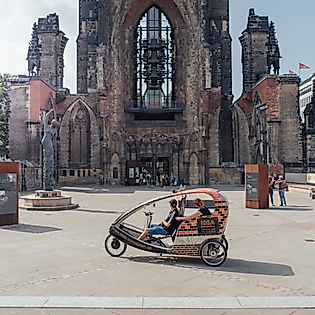
Narrow alleys, insights and views: Stephan Oelke tells the city's history along the way
He's heading for Deichstraße. "A real insider's tip. Before I became a city guide, I didn't know about it either." Picturesque town houses line the cobblestones - with the Nikolaifleet flowing behind. Iron gates prevent the water from flooding the buildings. Ebb and flow can be read from the traces on the outer walls. In places like this, Stephan Oelke tells exciting stories. For example, about the great fire of 1842, when the flames from Deichstraße spread to the warehouses at Rödingsmarkt. "After that, it was forbidden to build half-timbered houses."
Then we pass the Aalspeicher, a fish restaurant that recently turned 40 years old. The champagne bottle is still in the window. Stephan Oelke pulls the brake in front of the Kolonialwarenladen next door. Heino Großhaus stands in front of his shop, which is reminiscent of an old grocery store. The interior is stacked to the ceiling with colourful tin cans that used to hold coffee, sugar or detergents. "They come from decades of collecting," says Großhaus. His rustic restaurant is a popular meeting place for rickshaw drivers to eat a meatball or warm up in winter with some hot soup.
The next bicycle hotspot
The Landungsbrücken. Stephan Oelke leisurely guides his vehicle past the huge traffic jam, continuing up the promenade. His gaze wanders left and right out of habit. Couples with a city map in their hands are potential customers - but also business people who want to get to the main station quickly in rush-hour traffic. A classic city tour lasts at least one hour. Years ago he even spent five hours travelling with an American tourist. "Although he was about six feet tall and just about as wide." A sweaty but entertaining tour!
The afternoon rickshaw round: Across bridges and alleys in Hamburg's old town.
The ride is nearly over. Stephan Oelke turns past the Elbphilharmonie, does a once-around of HafenCity and stops in the Speicherstadt in front of a place his passengers normally don't see: The garage and workshop of the rental company are located in Dienerreihe. The historic building used to house a plumber's workshop. Today, rickshaws stand on the floor that is over a hundred years old. Their electric motors are charging or they are waiting for an inspection. Stephan Oelke adds his vehicle to the queue. He's off for the day and deserves to have his legs up.



